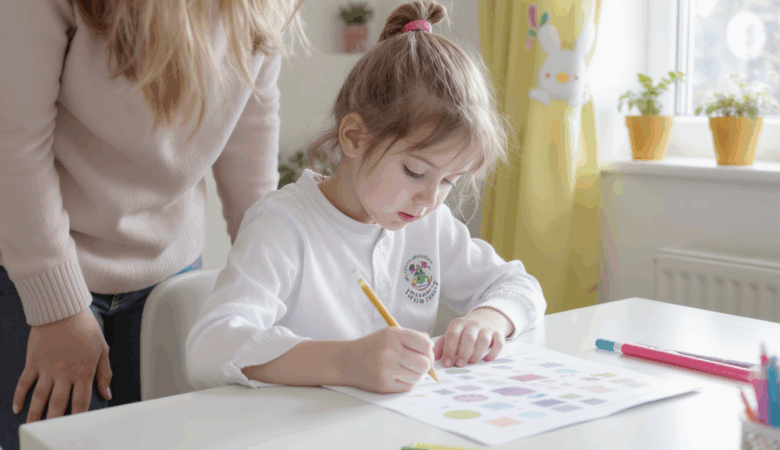If your child is preparing for grammar school entrance exams like Sutton, Tiffin, or those following the GL Assessment format, choosing the right mock exams is one of the smartest decisions you can make.
Mocks aren’t just practice, they’re preparation with purpose. The right mock tests can highlight your child’s strengths, expose blind spots, build resilience under pressure, and boost confidence before the real exam.
But with so many types of mock exams available, how do you know which one is the best fit for your child? In this guide, we’ll walk you through exactly how to make that choice based on your child’s goals, the target school, their personal learning needs, and the feedback that can guide their preparation journey.

1. Understand the School-Specific Format
Each school or exam board has its own format. Choosing a mock exam that matches the structure and content of your child’s real exam is essential.
Sutton Grammar
- Stage 1: Selective Eligibility Test (SET) comprising multiple-choice English and Maths papers, each lasting approximately 45 minutes
- Stage 2: English and Maths papers with written answers, designed to assess comprehension, reasoning, and problem-solving
Access their official website here.
Tiffin School
- Stage 1: English and Maths tests, primarily multiple-choice, assessing comprehension and mathematical reasoning
- Stage 2: English and Maths papers set by the school, including comprehension, a writing task, and standard format maths questions
Focuses heavily on structured reasoning, expression and academic depth.
Access their official website here.
GL Assessment Schools
- Subjects: English, Maths, Verbal Reasoning, Non-Verbal Reasoning
- Format: Primarily multiple-choice, modular by subject
- Timing: English and Maths around 50 minutes; Verbal and Non-Verbal Reasoning around 60 minutes each, often in timed sections
- Widely used in Kent, Buckinghamshire, and Northern Ireland
GL exams are standardised and often marked electronically for speed and consistency
Make sure you choose mock providers that clearly state which school or board their exam simulates. This alignment is what turns “general practice” into a real diagnostic.
Access their official website here.
2. Match the Level of Difficulty
Different providers have different levels of difficulty. Some mocks are intentionally harder than the real exams, which can help stretch a child’s capacity, while others are meant to build familiarity and confidence.
Consider:
- Stretching mocks: Ideal for high-performing students needing to improve accuracy, time management, or exam resilience.
- Confidence-building mocks: Suitable for students earlier in the process or who need to solidify foundational skills.
Examples:
- A Tiffin Stage 2 mock may include extended writing prompts and multi-step Maths problems.
- A Sutton mock will simulate a fast-paced, time-pressured environment.
3. Look at the Environment and Exam Conditions
Mocks aren’t just about content, they’re about experience. Replicating the exam environment can be a very powerful aspect of taking a mock.
Ask:
- Is the mock timed and invigilated?
- Is the setting similar to real test conditions (formal venue, desks, exam-style instructions)?
- Are pupils placed under real time pressure, without assistance or extra explanation?
- Is there a seating plan and exam protocol in place?
Experiencing a realistic setting reduces anxiety and prepares children emotionally, not just academically.
4. Check What Feedback You Receive
Not all mocks give you actionable insights.
Look for providers that include:
- Full score reports with breakdowns per subject and question type
- Analysis of time management (where the child slowed down or rushed)
- Comparative data — how your child performed against other candidates
- Suggestions for specific revision strategies and next steps
This kind of feedback is what helps parents and tutors guide revision productively , rather than guessing what to focus on.
If you want to try that, Mock Exam Centre is the perfect provider for it. Try a free online mock test here.
5. Use Mock Exams to Map Progress Over Time
Don’t just treat mocks as one-off events. When used consistently, they offer a timeline of your child’s development.
Tracking performance over time also helps detect patterns, like recurring errors in Verbal Reasoning, or slower pace in Maths under pressure.
6. Balance Mock Exams With Study Time
Mocks are powerful tools — but they are not a substitute for targeted study. Overloading with back-to-back mock exams can:
- Cause fatigue and stress
- Reduce the opportunity to reflect, revise, and improve
- Shift focus away from actual learning into test-taking habits only

7. Choose a Trusted, Transparent Provider
Look for mock centres or providers that:
- Are specialised in your child’s target school(s)
- Clearly state which format each mock is aligned to
- Offer structured reporting, not just raw scores
- Provide optional review sessions, marking guides, or parent debriefs
Ask for sample reports, speak to past parents, or look at online reviews to ensure they’re delivering value.
You can try our platform here.
8. Involve Your Child in the Process
Help your child understand that mocks aren’t about pass/fail. They’re a way to:
- Practise under real conditions
- Learn from mistakes in a safe environment
- Build emotional and mental strength
- Gain confidence through preparation, not pressure
Having this mindset shift helps reduce performance anxiety and builds a healthier relationship with testing.
Final Thoughts
Mock exams are one of the most strategic tools in your 11+ journey — if used wisely. Match your child’s mock with:
- The right exam board
- The school they’re targeting
- Their current level and confidence
- The feedback you need to grow
And most importantly: use mocks to build calm, clarity and confidence — not just scores. 11 plus success comes from a combination of these different factors.
Ready to choose the right mock exam? Subscribe to our Sutton, Tiffin or GL Assessment Mock Exams today and receive a full performance breakdown, realistic test environment, and strategic guidance for next steps.
Your child’s best performance starts with the right preparation.











Leave a Reply